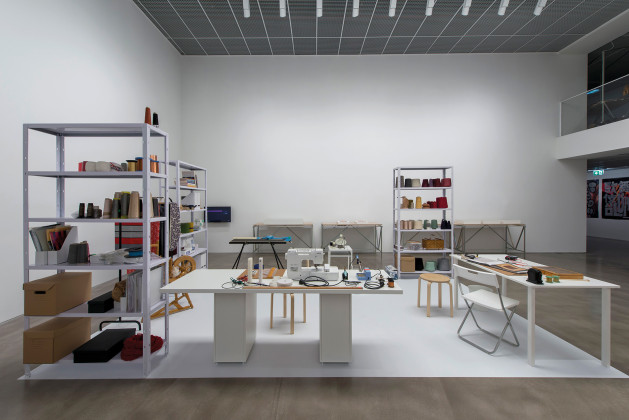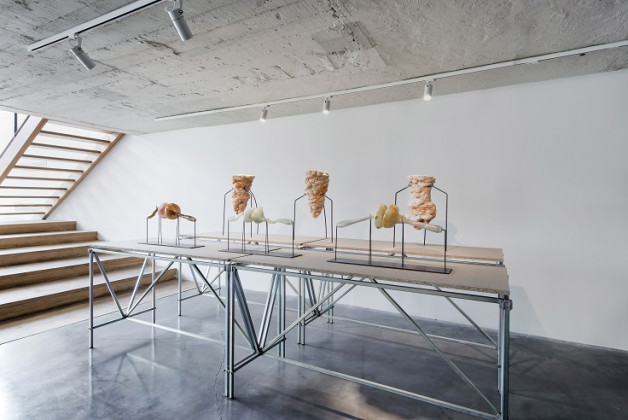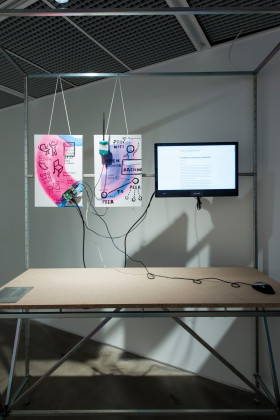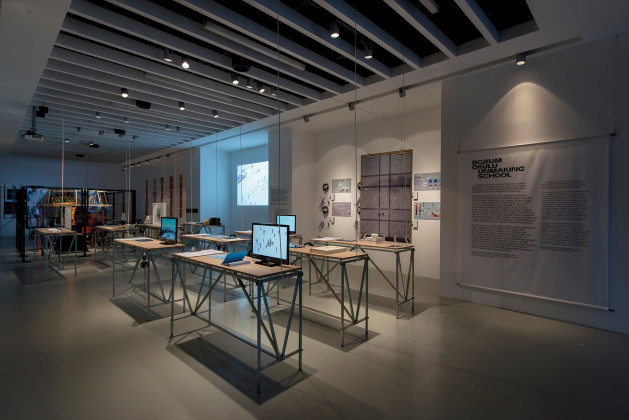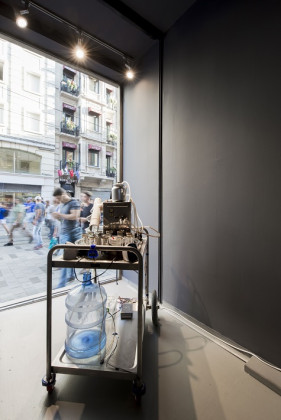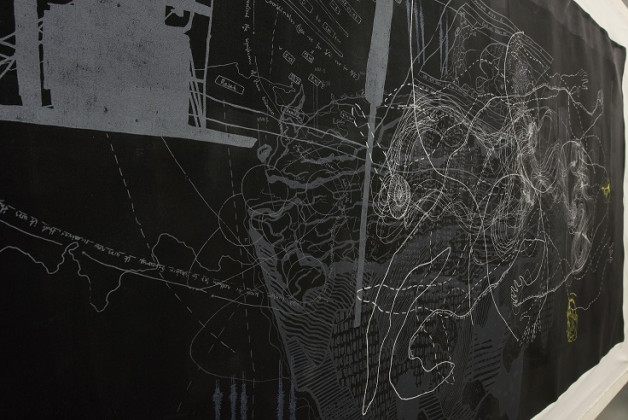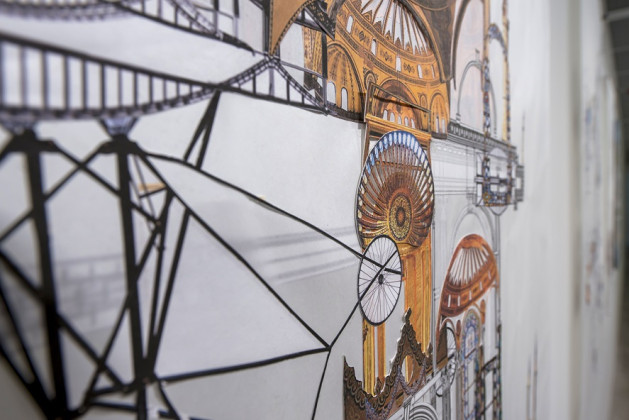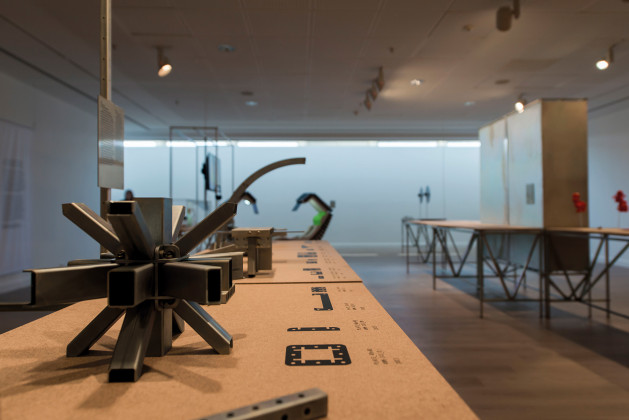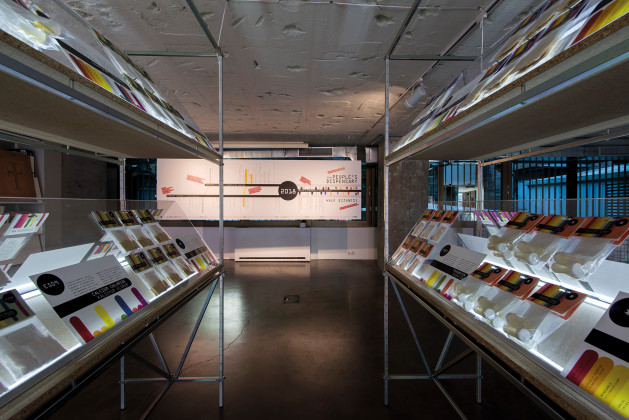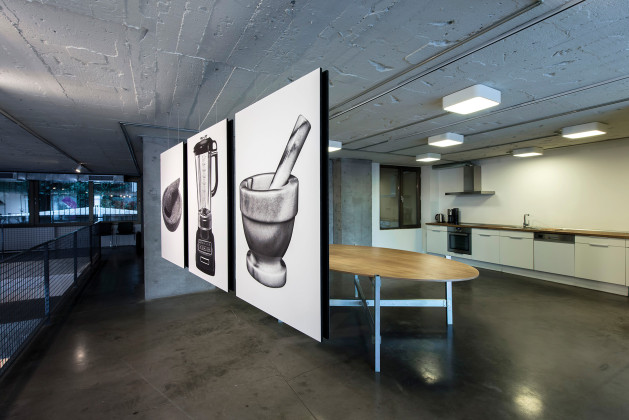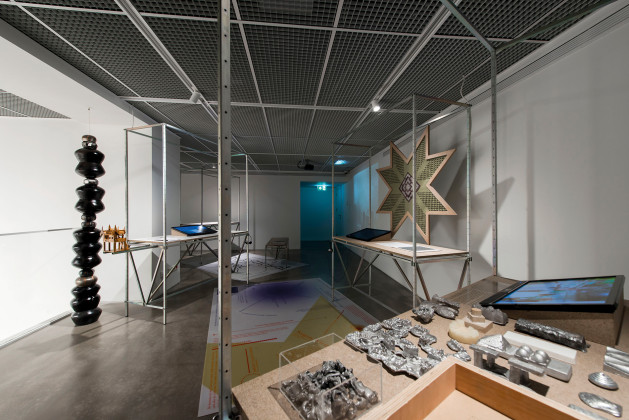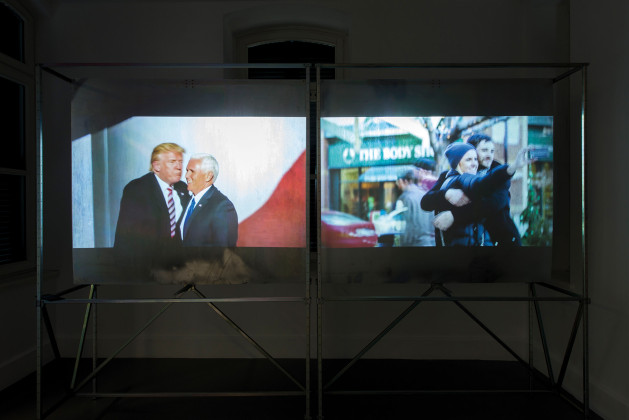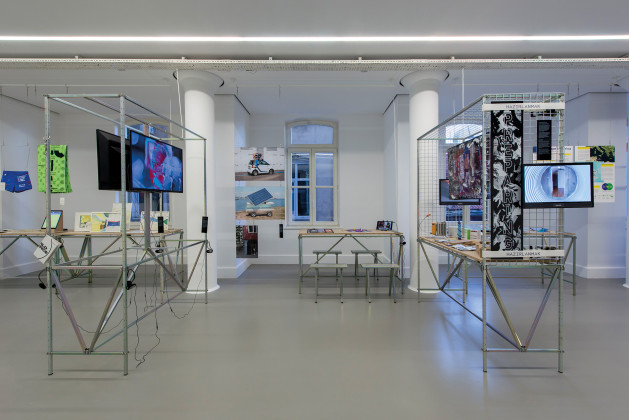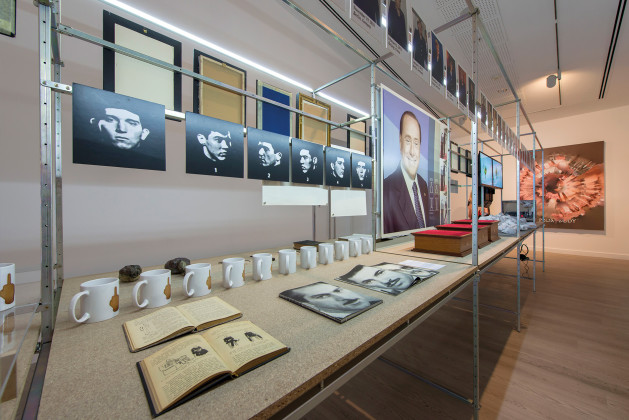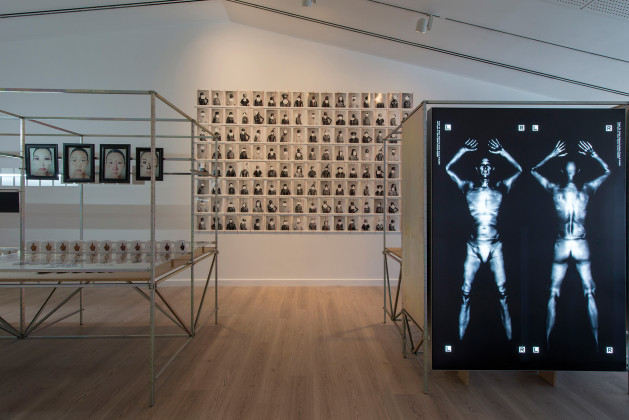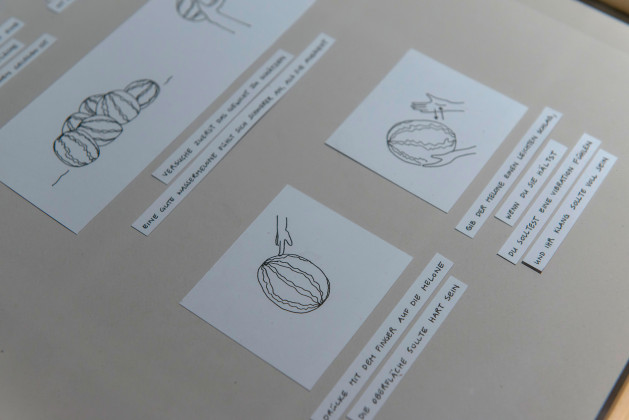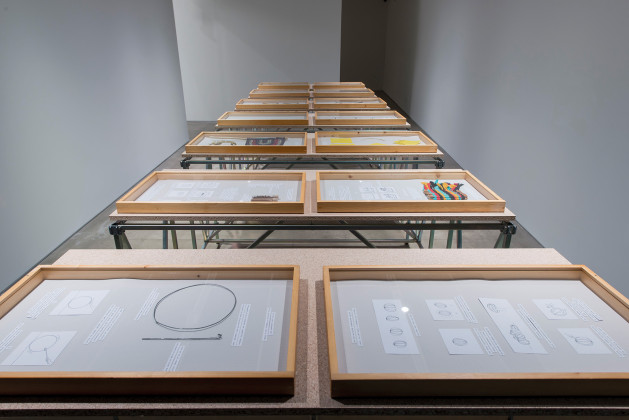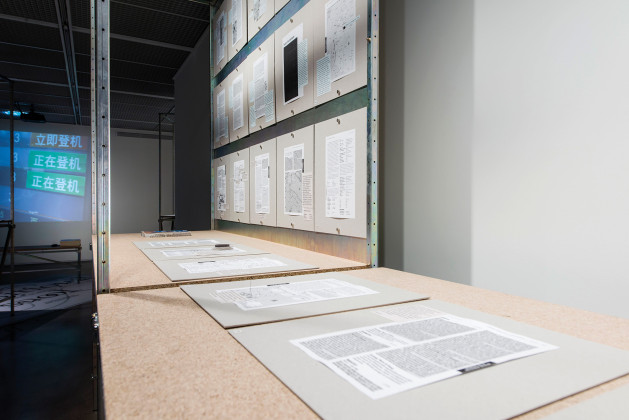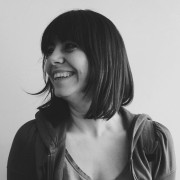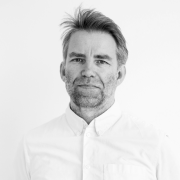Learning From Change
In conversation with Jan Boelen, the curator of 4th Istanbul Design Biennial on the theme of "A School of Schools." We discussed a variety of issues starting from the making of a design biennial up to design's capacity to respond to changes in the society.
Hülya Ertaş: Even though the biennial is spread through six venues, they are along the route from the Taksim Square to Karaköy and then Fındıklı. I had the impression that this route was also desiged. It starts with Unmaking School in Akbank Sanat by saying “forget all you’ve learned up to now and start your journey into the biennial”.
Jan Boelen: I think you’re right. Certainly, distributed, decentralized model is really something I wanted. The venues are classrooms and the streets are corridors of the school. Although we guessed that people would choose to start at Akbank Sanat, this is not the only possibility. You can start wherever you want. Akbank Sanat doesn’t mark any starting point and there is not a particular order or hierarchy. The theme of unmaking and unlearning is in fact in every venue as a kind of attitude that we want to propagate everywhere. However, there might be a literal presence in Akbank Sanat as the title suggests. The city itself is one of the most important places for the biennial because it contextualizes both the venues and the projects. In each venue, you always find the projects related to the city and context. They are not projects that could be made in any other biennial. They are made for Istanbul Design Biennial and hopefully, when you come out of venues to the street, you can see or think differently about the city. To that end, we opened windows to make a relation with the main street Istiklal in each venue. For the first time in the history of Istanbul Design Biennial, Greek School hadn’t been used and it broke the traditional typology of the biennial. These were very important decisions.
HE: What was the route in your mind? How did you design it?
JB: I knew Istiklal, Karaköy, places around there and this route from previous biennials. Everything comes together in that neighborhood by means of making, selling and exchanging values of objects, and cultural institutes that located in here. I can express this right now but I couldn’t do that at the beginning. Also the places like the “Han”, environments where different parts of the products are made, repaired or sold in different ateliers aroused my interest. It is this kind of strange ecology that I find very inspiring. And this ecosystem still exists in Istanbul. For example, the street near this restaurant in Brussels we sit right now is called the Butcher’s Street but the butchery tradition is completely gone. What becomes history in here is still functioning in Istanbul. You can see how craftsmen and suppliers are related and informing each other. So it is like a school on the street and you, as a human being, literally can design an environment around it. I really like this idea of a neighborhood.
Furthermore, the cultural institutes (Akbank Sanat, Yapı Kredi Kültür Merkezi, Pera Müzesi, Arter, Salt Galata and Studio-X) were really open to share their spaces. They altogether became like one bigger platform. When I felt that, I also realized that we could use the inherent existing infrastructures of these spaces just as we used the street so we wouldn’t have to invest a lot in buildings. We could form the program with the facilities of the venues such as cinema/auditorium in the Pera Museum or print shop in Akbank Sanat or the kitchen in the Studio-X.
HE: This is actually a political biennial but it doesn’t stick it to a nose of the viewer. It does it in a subtle way through the projects. The issues you tackled such as the information flow, globalization, standardization, immigration, post-work, climate change, consumerism, food security are extremely political while the responses to these are not necessarily so. Since you are also teaching at the Design Academy Eindhoven, you are spending time with the younger generation. What do you think about the post-political era of design? Have we passed the post-political and reached the post-post-political?
JB: Design is not neutral. For example how we talk to each other today and the act of eating meat is political. There is an activism against it because it is part of a bigger political system. These systems are applied to us or designed around us. You are subjected to its rules, regulations whether you want it or not. So it means that everything we do is political and affects everything. If design is now everywhere and omnipresent, that means everything is a political act, a political statement.
If you see design as something neutral, you are very naïve. If you look at design field, you would find pragmatic, solution-oriented things just like this fork we are holding right now. A few people start to analyze where its materials are coming from, how it is produced and transported to here. There are a lot of systems applied to this one particular object. And designers can help companies taking these decisions. That is one way of looking at design. Another way is to see it as a critical tool for fighting, debating, protesting that doesn’t aim at finding a solution anymore. The design objects of today can also be the objects to speculate, to make narratives or scenarios about possible futures. And they can be relational for making connections and building networks like the social media. All kind of objects can have different roles and can take different positions. Why I am saying this is, in fact, to show design is really fully political.
The moment you are engaged in design as political, it becomes more like an attitude. For the people in Bauhaus, design was also political. They wanted to build a utopia. They didn’t succeed as we understand today but they had an ideology to make a better world for everybody. There aare a lot of designers working as solution-oriented engineers or acting as marketers by considering design as a profit-oriented occupation based on producing and selling of objects with the help of new technologies. They also need to know what they do is political and it has implications. This is something denied quite a lot, almost 90% of companies and organizations ignore it. Everybody is in a kind of hypocritical situation. We both have an iPhone even though we know where and under which conditions they are produced. We are eating meat even though we both know it is one of the biggest polluter of the climate change. No one is completely correct. Everybody is a little bit wrong and we have to find other ways to deal with this.
HE: While I was listing all these issues tackled in the biennial, I realized that these are extremely current issues but they are also out of fashion because we’ve been discussing all of them since the 1970s.
JB: Yes, but these themes and topics come back in every 40 years. This is the Kondratieff wave described by the Russian economist. The discussion around these issues first appeared at the beginning of the Industrial Revolution, then in the crisis of 1910 and then again and again in the emerging crisis. Each time power and society have shifted. It crashed in 2008 and the system of the previous cycle was broken. They look very old-fashioned now because we’ve been talking about these for ten years now. But they are rooted back to the1970s, even the 1930s. It is also possible to superimpose these moments over real political situations. It is very strange to see how all of them are related to each other.
HE: Will the fact that everything has gained acceleration shorten the length of this wave?
JB: There is a possibility if you also start to accelerate the use. For instance, Timothy Morton in his book Dark Ecology suggests using consumerism to make a better world by letting people attracted by objects step in the trap. Let's consume more but in such a good way.
HE: Dmytri Kleiner also proposes “venture communism” for software projects. All of these are also about the fast flow of everything or the speed or acceleration. You mentioned that design is not capable of following what is really going on in the world at an interview on the Archdaily. Everything is happening so fast and design is responding as quickly as it could be, but it is not enough. On the other hand, the speed is also designed. I think it is more like a two-way relationship between design and acceleration. Can we use design for slowing down or for degrowth?
JB: Yes, we can. Indeed we designed technology, communication, information technology. It creates very fast, split-second trade and instant communication globally. So it is accelerating and how we accept it or react to it is also changing. These kinds of movements don’t really come from a real need. They come from a toxic combination of economic and technological traps where we are in. We lost the reason why we are doing things and started to do these things only for profit. That combination with technology and profit motive didn’t give us the reason why we are doing certain things. This is referring very clearly to what Cedric Price has already said in the 1960s, “If technology is the answer, what was the question again?” As you can see, each time we are inventing new technologies to keep this industrial system running, to make profit again. We can see it very clearly in the shift from lights bulb to fluorescent and then to LEDs or in the shift from transistors to computers. All has the same logic.
HE: This logic also infiltrated into small businesses like architecture offices. They start hiring people and then they say yes to every project to pay the employees' salaries. To keep the office machine running preceeds ethical decisions.
JB: You have to keep it running. It is the trap that people create for themselves. Architects become project developers, real estate developers as you see. So the system eats itself and that is where we are. Not only architecture but also financial market is organized like that. Then the real estate market explodes, then financial market, and then technology bubble explodes. Each time, these kinds of worlds eat themselves. This is also happening now in the material world with the plastic. So you have all these things that we created ourselves, like a stupid belief that it would be functioning very well. But we kept on being in the rat race. Nobody is questioning what we are doing, why we are doing or do we need this.
HE: The works that stroke me most at the biennial were the ones designed in detail, investigating a very specific topic but always keeping in mind the bigger picture of the global conditions like Water School or Body of Trust. On the other hand I am skeptical about works operating in small scale with expectations of a global change. Do you think there is a formula for design to act or perform in an interscalar way to foster change from daily life to planetary scale?
JB: I don’t agree completely with your analysis. I think we need not one big solution but many tiny little initiatives that try to improve something. This is such a difficult thing because as I said before, what makes things better? When we saw Italian water served us in this restaurant, maybe we could have asked for a bottle from Belgium. So making things healthier is something we should try to do. Now, there is Oslo Triennale dealing with degrowth, people will hate me but I think it is really absurd. Because degrowth is based on saying “What do you have? You should have even less.” to the biggest part of the population of the world, for instance parts in Africa, India or China. Because we are not talking yet about redistribution of wealth. We need to grow first to make degrowth possible. So questions becomes this “as we need to grow, what kind of growth do we want?” I would say I want to have a healthy growth, something taking every small action – like coming here by bike, drinking water not from Italy but from Belgium, etc- into account and putting things more in perspective rather than just saying degrowth.
HE: But the premise of the degrowth movement is that we accumulated enough wealth so we can redistribute it.
JB: Wealth should be accumulated within each and every small group of people. We need to have real systemic changes. If everyone starts blocking and changing the current system a little bit, then the potential of change can only occur and then the whole system can change. So that’s what I hope.
HE: I am more pessimistic because the system closes upon all the counter movements. Think of what happened to for example GitHub, at the end Microsoft bought it.
JB: I am quite optimistic, yet you are right. One of the projects we are doing now is the research on bio-plastic. And it is only going to work if it is scaled up enormously. We really believe in that project and push it to the maximum with the biggest industrial partner because it is really about global change. But at the same time, it is also about distributing the knowledge locally. So you have to do it in two directions, not just in one. Neighborhoods or communities that had never an access to these kinds of technologies produce it locally but companies do it in an industrial way. Otherwise, it is not going to work.
You have to decentralize know-how immediately. Big companies may take part in making delicate products which is needed to be at certain quality, local communities may take part in different levels of production requiring different levels of technological knowledge. Maybe, that’s the answer. Using the tools not for making a choice between “this or that” but saying “and and”.
HE: Going back to the biennial, its title is A School of Schools. So, what kind of school is the biennial with its exhibitions and public program? Sometimes there can be differences between the initial idea and end product. How did biennial change in this process?
JB: It is a plurality, not just one school. On the other hand, what you’re saying is not true in this case. This project was very clear from the beginning and became clearer while making it.
HE: I thought that you may had to reframe the school after receiving the open call submissions.
JB: The process was more like continuously editing. We had the luxury to select and we could edit according to materials from the open call. That made the biennial. We knew what we didn’t want but we couldn’t directly formulate what we wanted. Since it hadn’t been done before, we didn’t have another project that could be our reference. It was the same content-wise. We couldn’t find any project made on design education that wants to tell what we have or want to tell.
HE: I don’t see the biennial as a biennial focusing on design education.
JB: It is not on design education, it is on learning. It is more about how design informs us, what objects teach us, and how it mediates the exchange of knowledge. So this kind of understanding, this attitude of learning is much more important than the future of education. So it is not about education but what I wanted to do was to redesign the design education. It is the ultimate goal of the project.
HE: What would be the legacy of the biennial for Istanbul, participants, viewers and itself?
JB: First of all, we, as the curators, are overwhelmed by biennial being published in various media. Secondly, we think it is a good tool to establish a bond. My students from Design Academy Eindhoven will have a discussion on design education by inviting people from Turkey. That is exactly what I wanted. It is not just like you did a project, presented in the biennial and “the end”. It has become a really long-term engagement. On the other hand, I think that bringing in international perspectives by opening up a little bit is important for Turkey. I heard several times in different words that there were no Erasmus students anymore or I was the first international guest after so many years etc. So I thought of “how can I use bigger design field with international people” and “how they can continue to work together after the biennial hand in hand."
HE: For example, I want to get to know Ebru Kurbak. I was extremely amazed by her.
JB: Yes, I also would like to know more about her. I was informed of her through an Instagram post of a friend who lives in New York. Then we took contacts immediately and started to talk. And then she was in. We needed to give Turkish designers a platform so they could build international connections. For me, that was very important. Because there are very good Turkish designers but they are not known. Maybe it is about the mentality of the Turkish people, being modest rather than manifesting themselves by screaming. They work hard. That was kind of discovery for me. If I could give a critique to my former colleagues who curated previous the Istanbul Design Biennale, it would be lack of this kind of intertwining of different worlds. I would be very happy if this was the last design biennial. Because I think Turkey needs something else than a design biennial. Turkey needs an institute that works on design policy, design and architecture every day. They have to organize differently like a small hub as a connector for rest of the world and Turkey. But every day, not every two years. IKSV can do it, they have the network, address book, and everybody knows them. If they change the model from every two years to every day, it would be more effective. There can be events like symposiums presenting what have been done at the end of two years, and they can be highlighted with some fireworks too.
Related Content:
-
Social Design for Beginners
Curated by Angeli Sachs, Social Design exhibition in the Museum for Gestaltung Zurich aims to discuss implications of growth economy on human beings, environment and design. Banu Çiçek Tülü reviewed the exhibition as a good example of inclusiveness in a country where democratic design processes emerge in urban scale.
-
Learning From Biennial
Associate curators of 4th Istanbul Design Biennial Nadine Botha and Vera Sacchetti talks to XXI about the theme of "A School of Schools", selected projects and public program.
-
Learning From Space
Aslı Çiçek talks to XXI about 4th İstanbul Design Biennial's exhibition design and how it was implemented in various spaces.
-
We Learnt Everything from the Designers
Learning something new is an exchange. It starts with a humility of not knowing, it grows into a shared challenge, and if stuck to, evolves into the unexpected.
-
New Forms of Conviviality
Hulya Ertas talked with Cristina Gamboa, one of the founder members of Lacol, on their approach as an architecture cooperative
-
Seeds of Awareness
In the guidance of Michael Leung, this interview looks into a collective movement that flourishes at a street stall in Hong Kong as a reaction to the current development plans
-

A Play Experience
-
Beyond Design Lilliputianism
Throughout the 20th century design in many ways ruled as a royal practice of modernity.
 19.12.2018
19.12.2018



